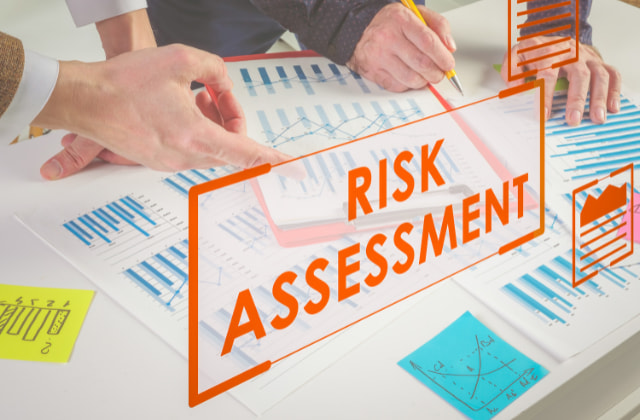The Importance and Importance of Risk Management in Ensuring Business Continuity
The Essential Significance of Risk Management in Getting Business Goals
In the swiftly progressing organization landscape, the capability to navigate unpredictability has ended up being an imperative. This is where Risk Management steps in, supplying an organized method to determining, assessing, and mitigating prospective barricades to proceed. It's greater than simply a safety step - it's a strategic device, fostering resilience and advancement. As we discover the crucial function of Risk Management in attaining organizational goals, one can not aid but wonder: exactly how does this convert right into real-world success?
Recognizing the Principle of Risk Management in Service

The Integral Function of Risk Management in Strategic Planning
Incorporating Risk Management right into tactical planning functions as a safeguard for organizations, securing their long-term plans with a strong structure of readiness and strength. It runs as the organization's radar, identifying potential risks and susceptabilities that can interfere with the path in the direction of attaining their mentioned objectives. Risk Management uses a framework for preparing for uncertainties and developing appropriate reactions, making sure the organization's survival and success also when faced with hardship. By incorporating Risk Management into critical preparation, companies can transform these unpredictabilities right into opportunities for development and development. This tactical interweaving of Risk Management fosters versatility, making organizations much more robust and enabling them to browse the ever-changing service landscape with confidence. Subsequently, Risk Management comes to be a crucial tool in strategic preparation, instrumental in securing lasting success.

Strategies for Identifying, Assessing, and Prioritizing Risks
The procedure starts with Risk identification, utilizing devices such as SWOT evaluation, which aids in determining potential threats and chances. Next, Risk assessment is carried out to establish the prospective influence and likelihood of each Risk. Risks are prioritized based on their prospective influence and chance, allowing organizations to focus their sources on high-priority risks.
Securing Business Workflow Through Effective Risk Management
In the service landscape laden with unpredictabilities, reliable Risk Management plays a pivotal role in safeguarding organizational operations. It functions as a protective shield, alleviating the negative impacts of prospective threats and making certain the smooth performance of all procedures. By recognizing and analyzing potential risks, Risk Management makes it possible for organizations to establish robust backup strategies. This preventive method help in keeping functional security, even when challenged with unanticipated situations. Essentially, Risk Management is the lifeline that maintains the business procedures afloat in the middle of unstable waters. It makes sure not only the survival but the sustainable growth of a company, making it a vital device in attaining company objectives. Organizations should spend in detailed Risk Management methods to protect their procedures.

Transforming Possible Dangers to Opportunities: The Power of Risk Management
A proactive strategy to risk Management entails identifying, assessing, and prioritizing risks to develop methods that transform them into prospective benefits. Therefore, by leveraging the power of Risk Management, organizations can not just secure their operations yet likewise stimulate development and attain their objectives in an uncertain organization environment.
Case Studies: Success Stories of Risk Management Driving Company Objectives
Effective implementation of Risk Management strategies has yielded sites excellent outcomes in different services, emphasizing the benefits of this approach. Multinational business like Microsoft and Google, for instance, have actually leveraged Risk Management to lessen dangers and manipulate possibilities, driving view it their organization objectives ahead. Microsoft's positive Risk Management technique aided it pivot promptly during the 2020 pandemic, transitioning to remote work smoothly, therefore keeping productivity. Google, by examining and minimizing potential risks in its cloud-based services, has ensured uninterrupted solution, consequently enhancing client depend on. These examples highlight just how effective Risk Management can not just steer services free from possible challenges yet also direct them in the direction of their critical purposes. Hence, Risk Management is essential to the search of organizational goals.
Verdict
In final thought, Risk Management is basically critical in accomplishing organizational objectives. By including Risk Management right into critical planning, businesses can better browse uncertainties, guard operations, and capitalise on chances, therefore straightening with lasting purposes.
At its core, Risk Management is the procedure of recognizing, examining, and attending to prospective risks that can negatively affect an organization's objectives or operations. Next off, Risk assessment is performed to establish the prospective impact and chance of each Risk. Risks are focused on based on their prospective impact and chance, enabling organizations to concentrate their resources on high-priority threats. By determining and analyzing prospective risks, Risk Management enables companies to establish durable contingency strategies. An aggressive technique to run the risk their website of Management involves recognizing, analyzing, and focusing on dangers to develop techniques that turn them right into prospective benefits.